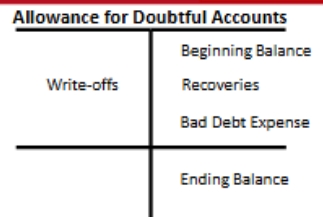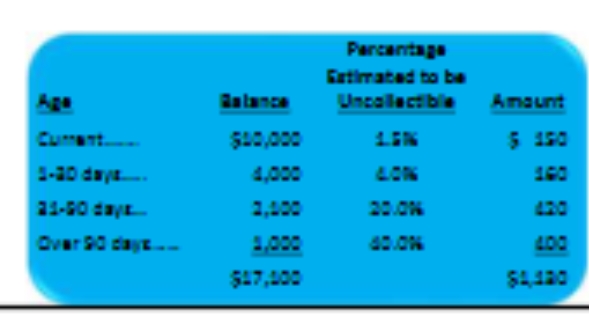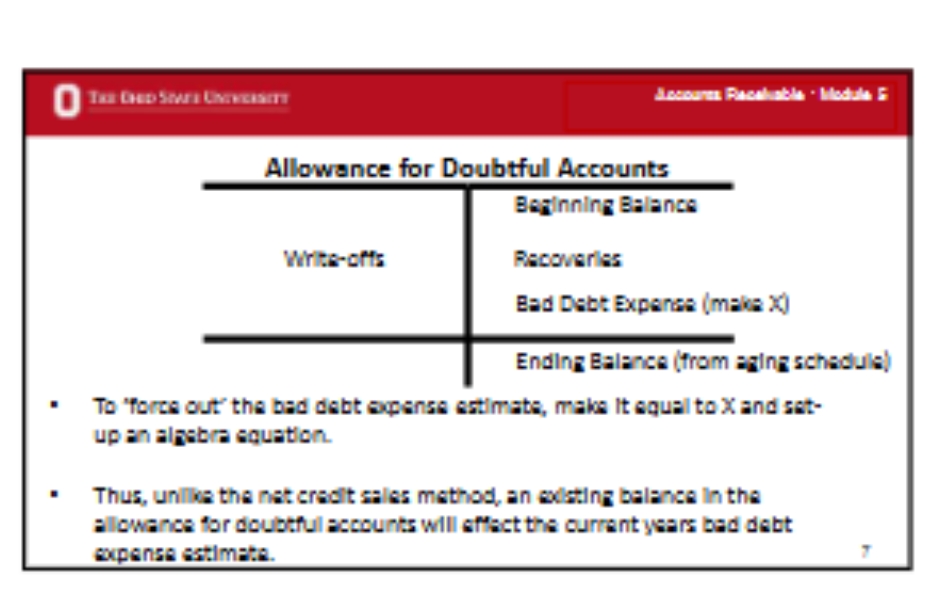Accounts Receivable
1/29
There's no tags or description
Looks like no tags are added yet.
Name | Mastery | Learn | Test | Matching | Spaced |
|---|
No study sessions yet.
30 Terms
Which income statement accounts are affected by the sale of a product?
Sales revenue, COGS
Which balance sheet accounts are affected by the sale of a product?
Accounts receivable, inventory
The Realization Principle
The earnings process is considered complete when goods are sold or when services are performed, even if cash is not collected at the time the good is sold or service performed
Record revenue when…
The earnings process is complete or virtually complete AND there is reasonable certainty as to the collectability of the asset to be received (usually cash)
If the sale of goods or performance of services occurs prior to the receipt of cash, it is an…
Accrued revenue (and an account receivable is recorded!)
Sales Revenue
Represents revenue earned from selling inventory
The 2 adjustments to sales revenue:
1) Sales Returns & Allowances
2) Sales Discounts
Sales returns
Result when customers are dissatisfied with merchandise and are allowed to return the goods to the seller for a credit or refund
Sales Allowances
Result when customers are dissatisfied with merchandise and the seller allows a reduction from the selling price. Goods are NOT returned in this case
Sales Discounts
Offer a cash discount to a credit customer for the prompt payment of a balance due
Example of discount
3/10, n/30
Read as “three (percent discount), (for) ten (days), net, thirty”
In this case, after 10 days there is no discount available and the remaining balance is due in 30 days
Characteristics of Sales Returns & Allowances and Sales Discounts
Both accounts are classified as a contra-revenue
Result in a decrease to revenues (specifically sales rev) on the income statement
Normal balance is DEBIT
Both accounts are subtracted from sales revenue on the income statement to calculate the net sales revenue
Since not all customers pay their bills, companies must record a…
Bad Debt Expense
Bad debt expense must be recorded in…
The same year as the credit sale is made
T or F: Bad Debt Expense is an ESTIMATE
True! We can’t predict who won’t pay
To record a bad debt expense…
Debit: bad debt expense (BDE)
Credit: allowance for doubtful accounts (ADA)
THIS IS AN ADJUSTING ENTRY BC IT IS MADE AT END OF EVERY YEAR
Characteristics of BDE
Expense account
Found on income statement
REDUCES NET INCOME
Characteristics of ADA
Contra-asset account
Decreases assets
Normal balance is a CREDIT
Found on balance sheet as a decrease to the accounts receivable
Represents the amount of accoutns receivable the company estimates it will not collect
What happens when the company makes the determination that a specific customer will not pay?
They must write-off the customer’s account receivable
Note: write-offs can occur at any point during the year and represent…
the actual bad debts of the company
Two key points about the write-off entry
It does NOT effect bad debt expense: BDE is estimated at end of each year. Thus, when a specific account is written off, we do not record BDE again—this would be double-counting. Instead, we eliminate the account receivable and reduce ADA to match
The write-off of an accunt receivable has no effect on the Net Realizable Value
Net Realizable Value (NRV)
NRV = Accts Rec - ADA
BDE is an estimate and _______ are an actual amount
Write-offs

2 methods in estimating BDE
Percentage of sales (net credit sales method)
Percentage of receivables (aging method)
Net credit sales method
BDE = net credit sales * % expected uncollectible
Aging method
Put accounts receivable into categories by age, and assign a % expected to be uncollectible to each category (this is an aging schedule)

Um yay

Financial Statement ratios relating to accounts receivable
Accoutns receivable turnover
Average collection period
Accounts receivable turnover ratio
An indication of how many times during a year a company is ‘turning over’ or collecting its receivables
Higher is better!!!! Means we’re collecting cash quicker
net sales rev / avg accts rec
Average Collection Period
Measures # of days, on average, between making a sale on credit and collecting cash
avg collection period = 365/accts rec turnover